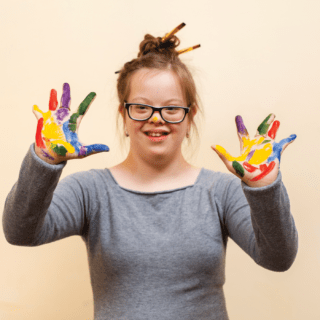Introduction:
Sensory processing is the remarkable ability of our brain to receive, interpret, and respond to the rich tapestry of sensory information that surrounds us. It is through this intricate web of senses that we explore, learn, and engage with our environment.At times, however, the symphony of sensory processing can become disrupted, leading to a condition known as Sensory Processing Disorder (SPD).
This disorder manifests when the brain struggles to accurately process and organize sensory information, creating a myriad of challenges. Individuals with SPD may experience hypersensitivity to certain stimuli, such as loud noises or textures, or they may seek sensory input, engaging in repetitive behaviors or seeking out intense sensory experiences.
Children with Sensory Processing Disorder face unique obstacles in their daily lives. They may struggle with activities that most people take for granted, such as getting dressed, eating certain foods, or navigating social interactions. These challenges can significantly impact their ability to participate fully in school, social activities, and everyday routines.
Overview of ayurveda in Sensory processing
In Ayurveda, sensory processing disorders are understood in relation to the Pancha Indriyas, the five sensory organs, and Ayurvedic approaches aim to restore balance in these organs to alleviate sensory issues and promote overall well-being.In Ayurveda classics, the role of the mind is heavily emphasized, which correlates with intellect or “Budhi.”
The functions of the mind mentioned in ancient Indian systems can be closely related to the functions of the brain. For instance, in texts like the Charaka Samhita, dating back to 5000 BC, Charaka explains that sometimes, even if an object is in front of you and your eyesight is normal, you may not see it due to the absence of the mind. This highlights the significance and importance of the mind and sensory processing in Ayurveda.
Ayurveda incorporates sensory diets as part of its range of treatments. These sensory diets stimulate the sensory system, such as the use of nasya, an Ayurvedic Panchakarma treatment where medicated oil or decoction is administered through the nostrils to open up and stimulate the olfactory system, thereby correcting the sense of smell and taste.
Other treatments like udhvarthana and abhyanga are also highly beneficial in Tactile integration. Additionally, various types of dhara (pouring of herbal liquids) aid in neuronal plasticity, thereby correcting various neurological functions.
In addition to Ayurvedic treatments, various asanas in yoga, which are part of clinical yoga, have shown great results in addressing autism spectrum disorders. Asanas such as paadahastha asana, thaadasanam, and vrikshasana, along with regular pranayama practice, help restore the balance of the chakras and correct the functions of the nervous system, facilitating internal healing and correction of sensory processing.
At Jeevaniyam, we focus on addressing sensory processing disorders in addition to autism and other neurodevelopmental disorders. We conduct detailed sensory processing profiles and evaluations, and our occupational therapists provide sensory integration therapy tailored to the needs of each child. Alongside sensory integration therapy, we also incorporate Ayurvedic procedures that are highly beneficial for sensory processing.
Furthermore, we educate parents on yogic exercises and advocate for a holistic approach combining Ayurveda, yoga, and sensory integration therapy, which proves highly beneficial in assisting children with sensory processing disorders, particularly autism. To book an appointment, kindly contact us.











